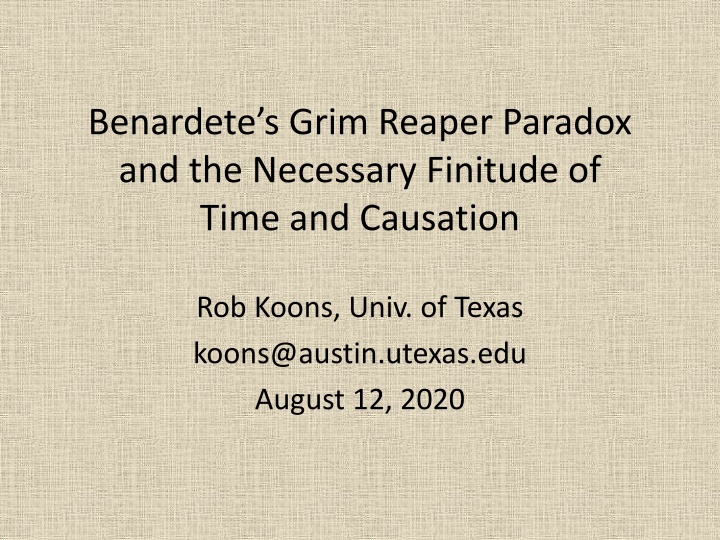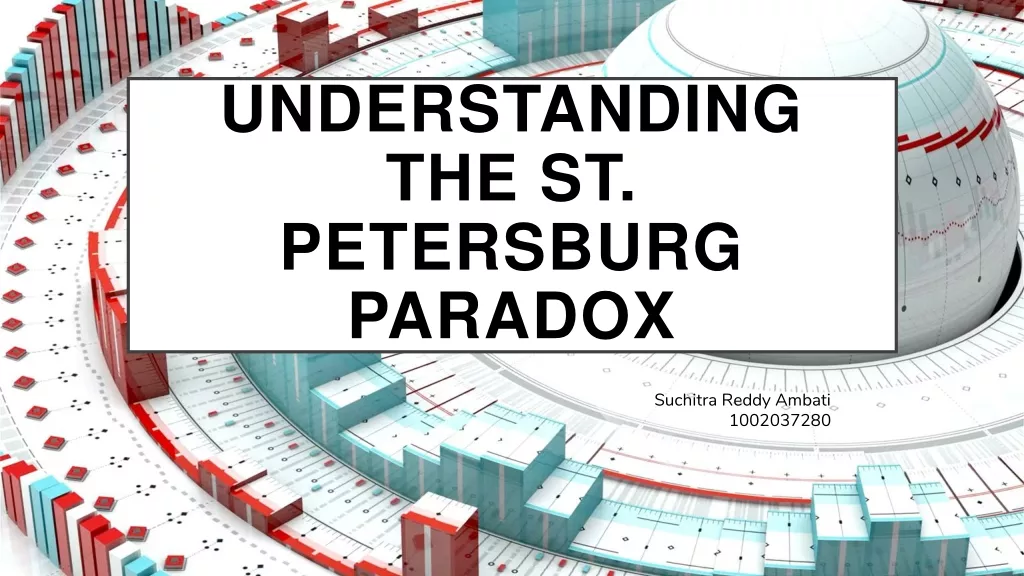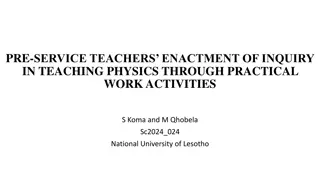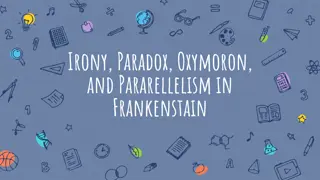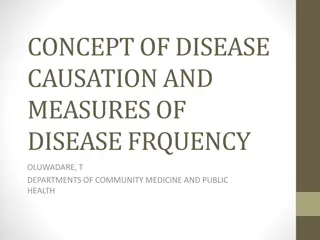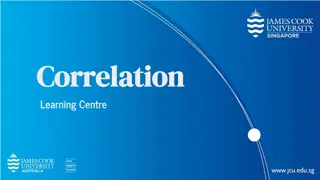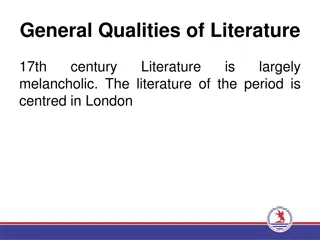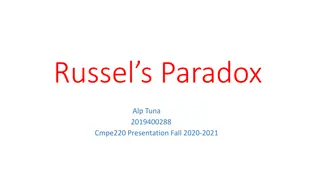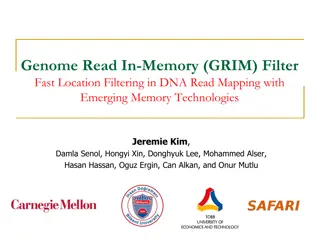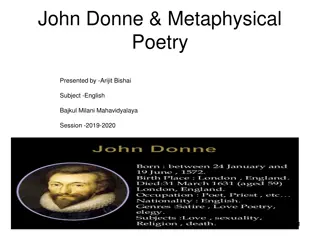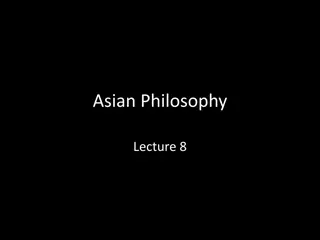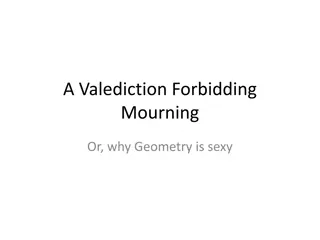The Grim Reaper Paradox: A Metaphysical Inquiry into Time and Causation
Exploring the intriguing Grim Reaper paradox and its implications on the necessity of finitude in time and causation, this content delves into various philosophical arguments surrounding the concept of infinity and the nature of existence. Through detailed analyses of different paradoxes and arguments, it challenges assumptions and highlights the inherent contradictions that lead to the reevaluation of fundamental philosophical principles.
Download Presentation

Please find below an Image/Link to download the presentation.
The content on the website is provided AS IS for your information and personal use only. It may not be sold, licensed, or shared on other websites without obtaining consent from the author.If you encounter any issues during the download, it is possible that the publisher has removed the file from their server.
You are allowed to download the files provided on this website for personal or commercial use, subject to the condition that they are used lawfully. All files are the property of their respective owners.
The content on the website is provided AS IS for your information and personal use only. It may not be sold, licensed, or shared on other websites without obtaining consent from the author.
E N D
Presentation Transcript
Benardetes Grim Reaper Paradox and the Necessary Finitude of Time and Causation Rob Koons, Univ. of Texas koons@austin.utexas.edu August 12, 2020
Death to Fred! The Grim Reaper Jose Benardete s Infinity: An Essay in Metaphysics (1964)
Classic Kalaam Argument 1. The universe (time and the totality of temporal things) had a beginning. 2. Whatever has a beginning has a cause. 3. Therefore, the universe has a cause. 4. The cause of the universe must be separate from it and so eternal, timeless. Difficulty with premise 1: how to demonstrate this from premises acceptable to the atheist.
Death to Fred! Death to Fred! 12:01 12:00:30 12:00:15 12:00:07.5 12:00:03.75 12:00:01.875
The Unbounded Version: Alexander Pruss (2009) 1 B.C.: GR #1 2 B.C: GR #2 3 B.C.: GR #3 etc. Each Grim Reaper issues a death warrant for Fred if and only if no preceding GR has done so. alexanderpruss.blogspot.com/2009/10/from-grim- reaper-paradox-to-kalaam.html
Proof: Some GR has acted 1. Assumption for reductio: no GR has acted at any time. 2. Consider GR #1. 3. By hypothesis, no GR with number greater than 1 has acted. 4. By the definition of the GR role, if no GR with number greater than 1 has acted, then GR #1 has issued a death warrant. 5. So, GR#1 has acted. 6. Contradiction.
Proof: no GR has acted 1. From previous proof, we know that some GR has acted. Say, GR #n. 2. By the definition of the GR role, if GR #n has acted, then no GR #m, with m > n has acted. 3. So, no GR #m, with m > n has acted. (1, 2) 4. So, no GR #m, with m > n+1 has acted. (3) 5. By definition of the GR role, if no m > n+1 has acted, then GR #n+1 has acted. So, GR#n+1 has acted. (4) 6. But, if GR#(n+1) has acted, then GR#n has not acted. Contradiction.
What do we do with paradoxes? Contradictions cannot be true. So, there is no possible world in which the Grim Reaper scenario is realized. Nonetheless, the possibility of the Grim Reaper scenario follows from some quite plausible assumptions (including the assumption that an infinite past is possible). The paradox demonstrates that at least one of these assumptions must be false.
What might lead us to think (initially) that the GR story is possible? 1. Assume that a simple, one-step GR scenario is possible. 2. Assume that an infinite past is possible. 3. Assume an appropriate version of David Lewis s Patchwork Principle. 4. Assume that powers and dispositions are intrinsic to things at times. From these four assumptions, the possibility of the infinitary GR stories follows. So, one of them must be false.
Responding to Paradoxes When we find an inconsistent set of very plausible principles, we must decide which is the weakest link and reject it. In this case, the weakest link is the possible infinity of the past. We have no verified examples of such a thing. Its very possibility has often been challenged in the history of philosophy. E.g., the kalaam philosophers.
The Inconsistent Set Proposition 1: Possible Grim Reaper. It is possible that there exist a Grim Reaper and an interval of time t such that the GR has the power and disposition to issue a warrant that persists until the end of t if and only if no warrant existed at the beginning of t.
Proposition 2: A Patchwork Principle David K. Lewis, Postscripts to Survival and Identity, in Philosophical Papers, Volume 1 (Oxford University Press, 1983). Here I rely on a patchwork principle for possibility: if it is possible that X happen intrinsically in a spatiotemporal region, and if it is likewise possible that Y happen in a region, then also it is possible that both X and Y happen in two distinct but adjacent regions. There are no necessary incompatibilities between distinct existences. Anything can follow anything.
The Patchwork Idea Start with some possible patches: an event, situation or scenario, wholly contained within some region of space and time. The specified qualities must be intrinsic to some things in the region at the relevant times. Add a possible spatio-temporal arrangement: a set of non-overlapping regions, each large enough to contain one of the scenarios.
The Patchwork Idea Result: a quilt . A possible world in which the possible scenarios co-exist, standing in the possible arrangement in space and time. Why? Any set of intrinsically specified possibilities are compossible (possibly realized together), so long as we can find enough room for all of them. The patchwork model is crucial for our knowledge of what is possible, since we cannot directly perceive what is merely possible.
Infinitary Patchwork Principle Proposition 2: Infinitary Patchwork. If there is a possible world W1 containing some (intrinsically-specified) scenario S within interval t, and there is a possible world W2 containing infinitely many non-overlapping intervals similar to t, then there is a possible world W3 containing an infinite series similar to that in W2, in which every interval of the series contains a duplicate of scenario S.
Proposition 3: Intrinsicality of Powers The Grim Reaper scenario (as described in Proposition 1) is intrinsic to the Grim Reaper during the interval t. The Grim Reaper scenario is described in terms of the Grim Reaper s powers and dispositions to act, not in terms of what the Grim Reaper actually does. These include: passive powers (a disposition to receive information from his predecessor), active powers (the power to send information to his successor), and dispositions (the propensity to generate or transmit information according to a certain rule).
The Neo-Humeists Way Out Some contemporary philosophers, following the Neo-Humeism of David Lewis, deny that powers are intrinsic. On this view: what powers a thing has depends on the whole history of the world, past, present, and future. This blocks the paradox. First: describe what actually happens. Then: assign powers and dispositions to the Grim Reapers.
Responding to the Neo-Humeists The paradox underscores the weirdness of denying the intrinsicality of powers. Humeists get the order of explanation wrong: powers explain their manifestations, the manifestations do not explain the powers. Neo-Humeism is subject to many counter- examples through thought experiment. For example, it would be metaphysically impossible for a kind of power never to be manifested.
Proposition 4: Possible Infinity of the Past It is possible for there to exist an infinite series of contiguous and non-overlapping intervals, each one earlier than the last. The series has a last member (in time), but no earliest member. The intervals have to be contiguous or abutting, so there is no worry about action at a temporal or spatial distance. If we accept all four principles, the possibility of the Grim Reaper follows logically.
The Weakest Link One of the four propositions must be false. We have least reason to accept Proposition 4, the possible infinity of the past. We have no direct experience of an infinite past, nor is one required by our best scientific theories. The Big Bang. Infinite past seems problematic: John Philoponous and the Kalaam tradition (al- Ghazzali).
Objections Dispositions and powers can fail. True, but we can define the scenario to include each GR s successfully acting in character. Success or failure in exercising one s dispositions is intrinsic. Reject infinite patchwork? Ad hoc. It is supported by exactly the same considerations that support the binary version.
What about an Infinite Future? An infinite future seems clearly to be possible. Is this consistent with the Grim Reaper argument? Yes, because the argument depends on the possibility of the single GR scenario. It is obviously possible for a GR to have the power to perceive and respond to the past; not so with respect to the future.
A Relativistic Loophole? Given relativity, there is a loophole to the Kalaam argument. We can deduce that every event has a finite past. Let s assume that that means (in relativistic terms) that every event has a finite past time cone. However, it is consistent with that hypothesis that the universe as a whole has an infinite past, with different regions having different lengths of history, with no upper bound.
Still need a Timeless Cuase However, such a relativistic model would be one in which there were many big bang events (rather than just one), mini big bangs, each with no temporally prior period (within the bang s backward time cone), and so no cause within time. Thus, we would still need God as the timeless cause of each of the local Big Bang events. Even more importantly: there will be a frame of reference in which all the Big Bangs are simultaneous so time as a whole still has a single beginning . Spacetime as a whole will need a timeless cause.
From Atemporal Being to God The traditional Kalaam argument gives us an atemporal cause of the universe. To be atemporal, such a being must be a being of pure actuality , with no potentiality for intrinsic change. For such an atemporal being to act, it must act intentionally by means of personal free will, not mechanically.
A Non-temporal Kalaam Argument Traditionally, Kalaam arguments focus on the existence of a first moment of time. However, the Grim Reaper paradox can be used to argue for a thesis of causal finitism: i.e., that there are no possible causal infinite regresses. If there are no infinite regresses, then there must be some first causes that is, uncaused concrete facts.
From Grim Reaper to Causal Finitism The argument to causal finitism makes use of a causalversion of Lewis s Patchwork Principle. If there is a possible world in which there is an infinite causal regress, and fact F is possible, then there is a world in which there is an infinite causal regress consisting of copies of F. But the Grim Reaper paradox demonstrates that this is impossible.
From Uncaused First Cause to God If there is an uncaused first cause, it must consist in a fact that is (a) necessary, (b) simple, (c) immeasurable, (d) immaterial, since anything that is contingent, complex, or finitely-bounded must have a cause. Such a necessary, simple, immeasurable, immaterial being must be personal in nature, if it is to act at all.
Problem: Inconsistency among the Premises The causal principles are in conflict with the Patchwork principles. Given Patchwork, we could construct a world in which events occur without being preceded by appropriate causes.
Two Possible Solutions The causal principles are not metaphysically necessary. They hold in the actual world and all nearby worlds. Better: Add a causal proviso to the Patchwork principles. The revised Patchwork would still apply to the GR scenario, since no causal principle is violated.
Objecting to the Patchwork Principle Graham Oppy rejects the unrestricted use of the Patchwork Principle in determining metaphysical possibility. On Oppy s picture, every possible world deviates from the actual history of the world at some point in the past, with a shared history before that point. If the past is infinite, then the Grim Reaper paradox could not share any history with the actual world.
Two responses to Oppy 1. We can still rely on the atemporal, no- infinite-regress version of the argument. Think of the original Benardete paradox. This could have deviated from the actual world in the past. 2. We can run the argument in terms of conceivability rather than metaphysical possibility, where conceivable = not known a priori to be impossible.
Further Reading Jose Benardete, Infinity: An Essay in Metaphysics (1964). Alexander Pruss, From Grim Reaper Paradox to Kalaam, alexanderpruss.blogspot.com/2009/10/from- grim-reaper-paradox-to-kalaam.html Robert C. Koons, A New Kal m Argument: Revenge of the Grim Reaper, No s 48 (2014):256-267.
